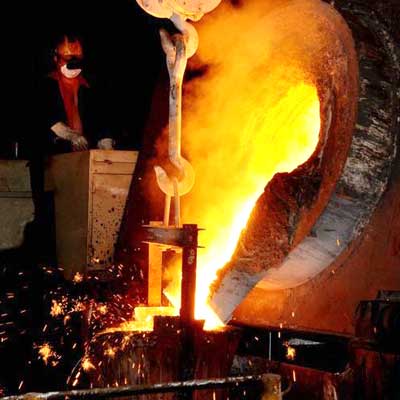|
Steel casting is a specialized form of casting involving various types of steel. Steel castings are used when cast irons cannot deliver enough strength or shock resistance. Examples of items that are steel castings include: hydroelectric turbine wheels, forging presses, Ductile Iron Casting gears, railroad car frames, bodies for valves and pumps, machinery used in mining, marine equipment, and engine casings. Steel castings are categorized into two general groups: carbon steel and alloy steel. Malleable or cast-iron castings are sometimes united by heating in contact to a high temperature; this is termed "bumming" together. It is sometimes necessary to make an addition to a casting to complete or to replace a portion which has been broken off. For this purpose the casting already made is placed in a mold of the proper shape and molten metal poured in.

The solid metal must be heated up to a sufficiently high temperature, and there are two methods which are usually distinguished as (a) casting on, where the solid metal is heated with a flame, and (b) burning on, where the molten metal is first caused to run into and out of the mold until the solid portion has been sufficiently heated, when the outlet hole is closed, and the mold allowed to fill up.
The ordering of metal castings takes a certain amount of time and energy to qualify a potential supplier foundry. To get the best value from the metal casting also requires a cooperative effort on the part of the customer and the supplier foundry from the early stages of the design through to the end manufacturing process. Good planning ahead of time will pay dividends for both you (the customer) and your supplier foundry.
Castings are generally furnished with un-machined as-cast surfaces, unless otherwise specified. To take advantage of the casting process, the supplier foundry should also know which surfaces are to be machined and where datum points are located. The acceptable dimensional tolerances must be indicated when a drawing is provided. Tolerances are normally decided by agreement between the supplier foundry and customer. Close cooperation between the customer's design engineers and the supplier foundry is essential to optimize the casting design.
For more information click here ->>Die Casting
|